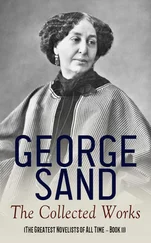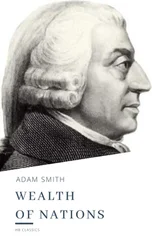Adam Smith is most famous as the author of the Wealth of Nations , but as the current volume aims to show by introducing the reader to his complete body of thought, this sits within a wider systematic body of work. In this chapter we will examine the outline of Smith’s system and then proceed to look at his views on science and system. This will set the scene for the following chapters, where we will look in some detail at his moral, political, and economic writings.
Smith published two books during his lifetime: The Theory of Moral Sentiments in 1759 and An Inquiry into the Nature and Causes of the Wealth of Nations in 1776. Both books went through several editions before he died and he made significant revisions to them, particularly to the Moral Sentiments . We can draw a number of conclusions from this about Smith’s attitude to his work. The fact that he significantly revised the Moral Sentiments for the 1761 second edition shows that he was willing to respond to the critics of the first version of the book (including his friend David Hume). Second, the fact that he returned to the Moral Sentiments and prepared a final edition with significant further additions in 1790, just before he died, shows us that he remained committed to the arguments of the book and to presenting them in the most convincing fashion possible. Moreover, the fact that he revised the Moral Sentiments after he wrote the Wealth of Nations suggests that he saw no necessary contradiction between the content of the two books – a point that escaped some of his nineteenth-century German readers. who saw a contradiction between the arguments of the two and sought to explore this under the heading of the ‘Adam Smith Problem’. The Germans were puzzled by what they saw as a contradiction between the focus on sympathy in the Moral Sentiments and the emphasis on self-interest in the Wealth of Nations , a point we will address as we move through the book and to which we will return in the final chapter on Smith’s legacy. 1
In addition to these two books, we have the posthumous collection of unfinished essays, the Essays on Philosophical Subjects , published in 1795. We will cover the more important of these essays in the section below on science, but the volume also included some reflections on the role of imitation in the arts, an essay on poetry, and another on sense perception. The modern edition of this collection, part of the Glasgow edition of Smith’s works, also includes a series of minor letters and reviews.
In his correspondence, Smith mentions two other projected volumes: one on the history of the arts, literature, and sciences and another on justice and politics. Neither of these came to fruition. However, we have been fortunate enough to discover student notes covering his Glasgow University Lectures on Jurisprudence and Lectures on Rhetoric and Belles Lettres . These are reasonably complete and have allowed us to reconstruct both his teaching and the main themes that he sought to convey to his students. They also show that Smith was developing many of the ideas that would later appear in the Wealth of Nations while he was a Professor at Glasgow in the 1750s and 1760s.
Overall, Smith is a remarkably consistent thinker. The various elements of his system seem to fit together reasonably neatly. As we will see in a moment, this is largely due to his adoption of a single underlying method of inquiry that unites his views in such apparently diverse areas as rhetoric and economics. Smith, like many of his fellow Enlightenment thinkers, was a man of polymathic interests, a voracious reader, and a regular attendee at discussion clubs and salons. But he was also a careful and systematic thinker. His books are skilfully constructed and he makes no wild or unsupported claims. This care is matched by his attention to detail in providing evidence for his claims. And all of this is an expression of his belief that his philosophy was part of the new science of man, an empirically grounded attempt to achieve in the human sciences what was being achieved in the natural sciences. Smith clearly understood himself as deploying a particular version of the scientific method. One of his books is a ‘Theory’ and the other an ‘Inquiry’, and this signals to the reader that these are not occasional or unsystematic pieces, like an ‘Essay’. They are supposed to be an addition to human knowledge that will surpass previous attempts in the field as the result of the innovative methodology being developed.
Smith develops this method because he is dissatisfied with how a lot of philosophy had been undertaken in the past. He is generally dismissive of the view that philosophy can helpfully be pursued in seclusion from everyday experience of the world. Excessive abstraction can lead philosophers to produce elegant theories and beautiful arguments that crumble as soon as they come into contact with experience of the real world. Smith is absolutely committed to providing evidence for his claims and to avoiding the danger that ‘wrong systems’ that are a ‘refinement of philosophy’ 2can take root and mislead us. Smith, in line with the mainstream of the Scottish Enlightenment, demands that theorizing must be supported by actual data gained from observation of life as it is, or as it has been lived.
To start to understand Smith’s methodology and the version of the science of man that he developed in response to his reading of Newton and Hume, we should turn to his final, posthumous, publication, the Essays on Philosophical Subjects . The Essays were published in 1795, five years after Smith’s death, and represent the only unpublished papers that he thought worth saving. The rest of his papers were burned shortly before he died. His executors, the scientists Joseph Black and James Hutton, prepared the essays for publication and added a biographical essay by the Edinburgh philosopher Dugald Stewart. It may seem odd to look to Smith’s posthumous writing to start a consideration of his philosophical method, but this becomes less surprising if we understand that the most interesting essays in the volume were written early in Smith’s career and revised through his life. The three historical essays on Astronomy , Ancient Physics , and Ancient Logics and Metaphysics form part of Smith’s projected, but uncompleted, book on the history of art, science, and literature. 3
The full title of the longest of these essays is ‘The Principles which Lead and Direct Philosophical Enquiries Illustrated by the History of Astronomy’. This reveals that Smith’s true interest is not the details of the development of astronomy, but rather the exploration of the nature of philosophy (including what we would now call science). His main contention is that the formal practice of science is a deliberate version of the underlying way in which the human mind operates. Smith follows Hume’s views on the association of ideas through repeated experience as the source of the habitual mental patterns that form human understanding. As we saw above, Hume’s reputation as a sceptic arose from his view, first laid out in the Treatise of Human Nature , that the power of philosophy to provide absolute certainty for our beliefs was radically limited.
For both Hume and Smith, humans form their beliefs about the world from experience. We form expectations drawn from repeated past experience of links between phenomena and these suggest to us that a similar relationship will hold in the future. As a result, our knowledge is always a probability rather than absolutely certain. Our minds flow from one idea to another through a set of habitual expectations and associations of ideas. We think that the sun will rise tomorrow because it always has done in our past experience, that fire is hot because it has always been found to be so; but we cannot be absolutely certain that these generalizations will continue to hold. This observation colours Hume’s and Smith’s understanding of what we can expect from philosophy and leads to a sort of epistemic modesty that is characteristic of the latter’s entire career.
Читать дальше












